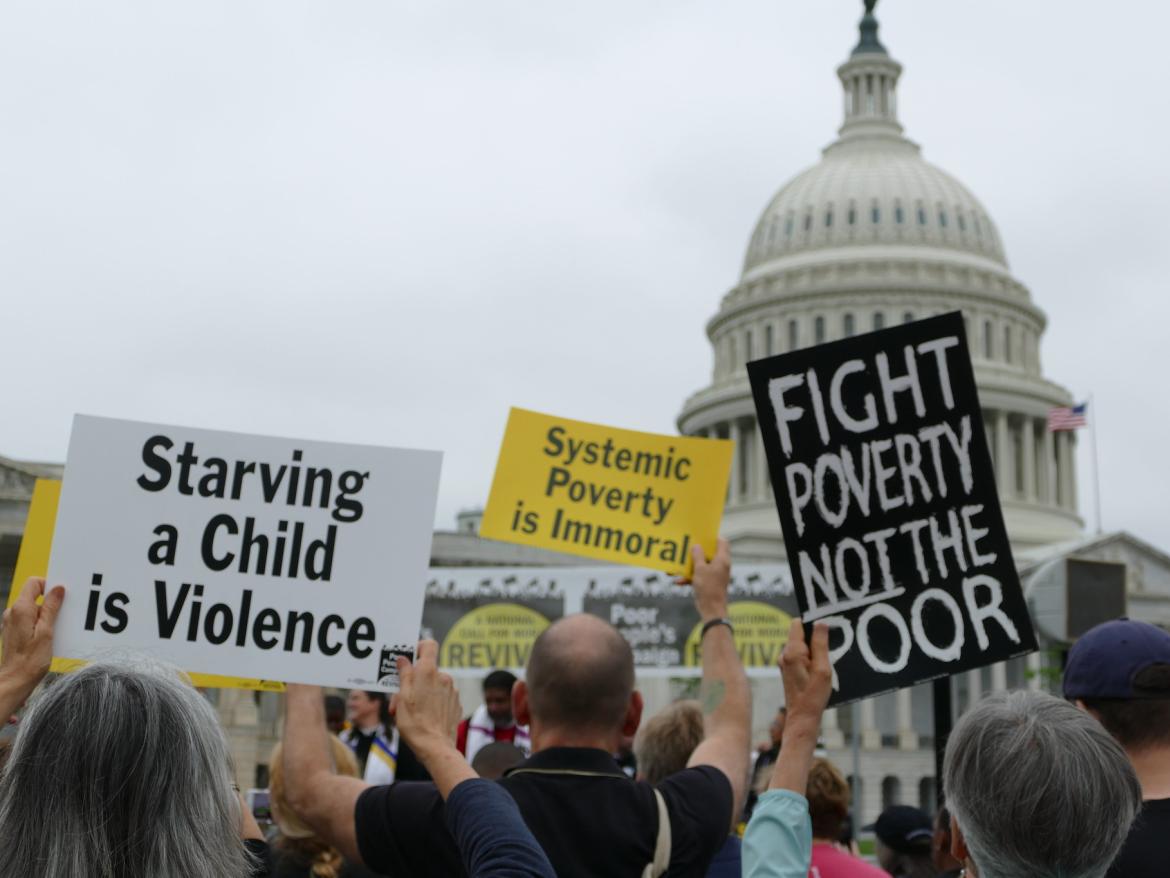Fulfilling the promise of this country means building thriving communities, so that families and individuals can get ahead and so that children can have a fair shot in life.
Today, we remain far from our potential, with millions living on incomes too low to afford even the very basics. In 2018, more than 38 million people in the United States lived below the official poverty line of $25,926 for a family of four.
Opportunities to Flourish
A strong and moral society ensures that its people can meet their basic needs and give their children fair opportunities to flourish. That is impossible with today’s high levels of poverty.
In this nation of abundance, far too many cannot pay their bills and meet their children’s daily needs. In 2018, more than 1 in 9 people lived below the poverty line. At least 1.5 million households are living on cash incomes of less than $2.00 per person per day. This number has nearly doubled since the welfare reform of 1996.
Racism and Poverty
Racial discrimination and poverty are intricately linked. We cannot effectively address poverty without actively recognizing and addressing racism.
Generations of discriminatory policy and wealth-stripping practices have left Black and Latinx households with about a sixth or a seventh of the wealth held by non-Hispanic white households. Wealth is that economic security that allows your family to weather a financial storm, a layoff, an illness, or unexpected expense. It’s also money in the bank that affords you a down payment on your first home, college savings for your kids, retirement security, and a solid inheritance for the next generation.
We cannot effectively address poverty without actively recognizing and addressing racism.
From policies that made it harder for people of color to buy homes, receive a quality education, work in certain jobs, pass down property, get a loan or start a business, the U.S. government has made it difficult for non-white people to amass wealth. It’s estimated that if Black families continued to grow their wealth at current rates, they would attain the level of wealth white families enjoyed in 2013 by 2241.
It’s also estimated that if Black and Latinx households enjoyed the same homeownership rates that whites enjoy (73 percent), that alone would increase the average Black household wealth by 451 percent and the average Latinx household wealth by 350 percent, reducing the racial wealth gap by 31 and 28 percent respectively.
Research shows that in the retail industry, Black and Latinx full-time workers earn 75 percent of the wages of their white peers, amounting to losses of up to $7,500 per year. Additionally, Black and Latino workers are overrepresented in the positions with the lowest pay and the least stability, and are more likely to be working poor than their white colleagues.
Subprime lending is five times more prevalent in Black neighborhoods than in white neighborhoods. Even when income and credit rate are equal, Black people are up to 34 percent more likely to receive higher-rate and subprime loans with a prepayment penalty than their similarly situated white counterparts.
Long Term Benefits of the Safety Net
The safety net is doing a lot to ensure that people have food to eat and a place to sleep. Yet these programs do more than just help struggling individuals meet basic needs. They produce long-term gains in improved health, educational achievement, employment, and earnings.
A strong and moral society ensures that its people can meet their basic needs
When people can meet their basic needs, they are better able to find stable employment, experience improved health, and move up the economic ladder.
But the safety net alone is not enough to end poverty and ensure economic mobility. There is a lot we can do to ensure that people have the tools, support, and services they need to move out of poverty. Sound and responsible federal policies are essential.
Join our email list!
Stay informed and stay active
